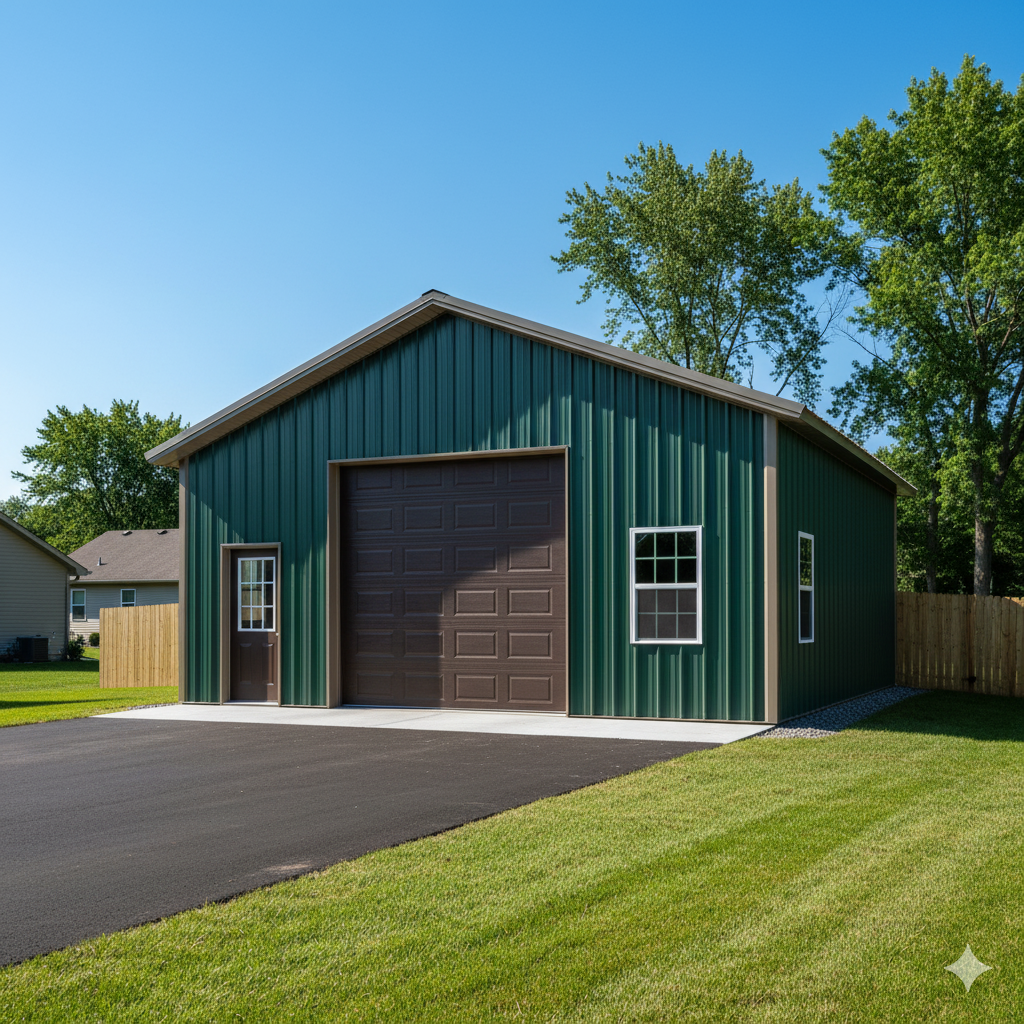![Blog Hero]()
Carport Materials: How to Choose the Right Ones
When it comes to building a carport, selecting the right materials is crucial for ensuring durability, functionality, and aesthetic appeal. Whether you’re looking to protect your vehicle from the elements or add value to your property, here’s a comprehensive guide to help you choose the best materials for your carport.
Understand Your Needs and Environment
Before you dive into material selection, consider the primary purpose of your carport and the environmental conditions it will face.
- Purpose: Is the carport purely for vehicle protection, or will it also serve as a covered outdoor area?
- Climate: Consider your local weather patterns. For instance, if you live in an area with heavy snowfall, you’ll need materials that can withstand weight and cold temperatures.
Common Carport Materials
Wood Carport
- Pros:
- Aesthetic appeal: Wood provides a natural and classic look that can complement various architectural styles.
- Customizability: Easy to paint or stain to match your home’s exterior.
- Cons:
- Maintenance: Requires regular upkeep, such as painting or sealing, to prevent rot and pest damage.
- Cost: Can be more expensive than other materials, especially if using high-quality or treated wood.
Example: Pressure-treated pine or cedar are popular choices due to their resistance to insects and decay.
Metal (Steel and Aluminum) Carport
- Pros:
- Durability: Resistant to weather conditions, pests, and fire.
- Low maintenance: Doesn’t require frequent upkeep like wood.
- Cons:
- Aesthetics: Can appear industrial or less homey compared to wood.
- Heat: Metal can become very hot in direct sunlight, which might affect the temperature underneath the carport.
Example: Galvanized steel is commonly used for its rust-resistant properties, while aluminum is favored for its lightweight and corrosion resistance.
Polycarbonate and PVC
- Pros:
- Light transmission: Allows natural light to pass through, which can be beneficial for visibility.
- Flexibility: Can be used for both roofing and siding.
- Cons:
- Durability: Can be less durable than metal or wood, especially in extreme weather.
- Appearance: May not provide the same aesthetic value as other materials.
Example: Polycarbonate panels are often used for their UV protection and impact resistance.
Roofing Materials
The choice of roofing material can significantly impact the carport’s effectiveness and longevity.
Metal Roofing Carport
- Pros: Long-lasting, durable, and can reflect sunlight to keep the area cooler.
- Cons: May make noise when it rains or hails.
Example: Corrugated metal roofing is a popular option due to its strength and longevity.
Shingle Roofing Carport
- Pros: Matches the roofing of most homes, providing a cohesive look.
- Cons: Requires more maintenance and has a shorter lifespan compared to metal roofing.
Example: Asphalt shingles are a common choice for their affordability and ease of installation.
Polycarbonate Panels
- Pros: Lightweight, durable, and allows natural light to pass through.
- Cons: Can discolor or become brittle over time with prolonged sun exposure.
Example: UV-protected polycarbonate panels are ideal for areas with high sun exposure.
Budget Considerations
Your budget will play a significant role in the materials you choose. While it’s tempting to go for the cheapest option, consider the long-term costs associated with maintenance and replacement.
- Initial Cost: Compare the upfront cost of materials.
- Maintenance: Factor in the cost and frequency of maintenance required.
- Longevity: Consider how long the material will last and its resistance to wear and tear.
Aesthetic Appeal
Choose materials that complement the existing style of your home. A well-designed carport can enhance your property’s curb appeal.
- Match Your Home: Select colors and styles that blend seamlessly with your home’s exterior.
- Landscaping: Consider how the carport will integrate with your garden or driveway.
Sustainability
If you’re environmentally conscious, look for materials that are sustainable or have a low environmental impact.
- Recycled Materials: Some metal carports use recycled steel.
- Eco-Friendly Treatments: Choose wood treated with environmentally safe preservatives.
Conclusion
Choosing the right materials for your carport is a balance of durability, aesthetics, budget, and environmental considerations. By understanding your needs and the characteristics of different materials, you can make an informed decision that will provide you with a functional and attractive carport for years to come.
_____________________________________________________________________________________________________________________________________________________________________
Recent Blogs
Similar Blogs You May Like
Discover exciting categories. Find what you're looking for.

How to Keep Your Carport Stable During Heavy Snow and Strong Winds
December 29, 2025
Carports
Winter can be tough on outdoor structures, especially in regions that experience heavy snowfall and...
Read more

Residential Carport Building: Legal Requirements and Best Practices
December 26, 2025
Metal building
Carports have become a popular addition to residential properties, offering affordable protection for vehicles and...
Read more
